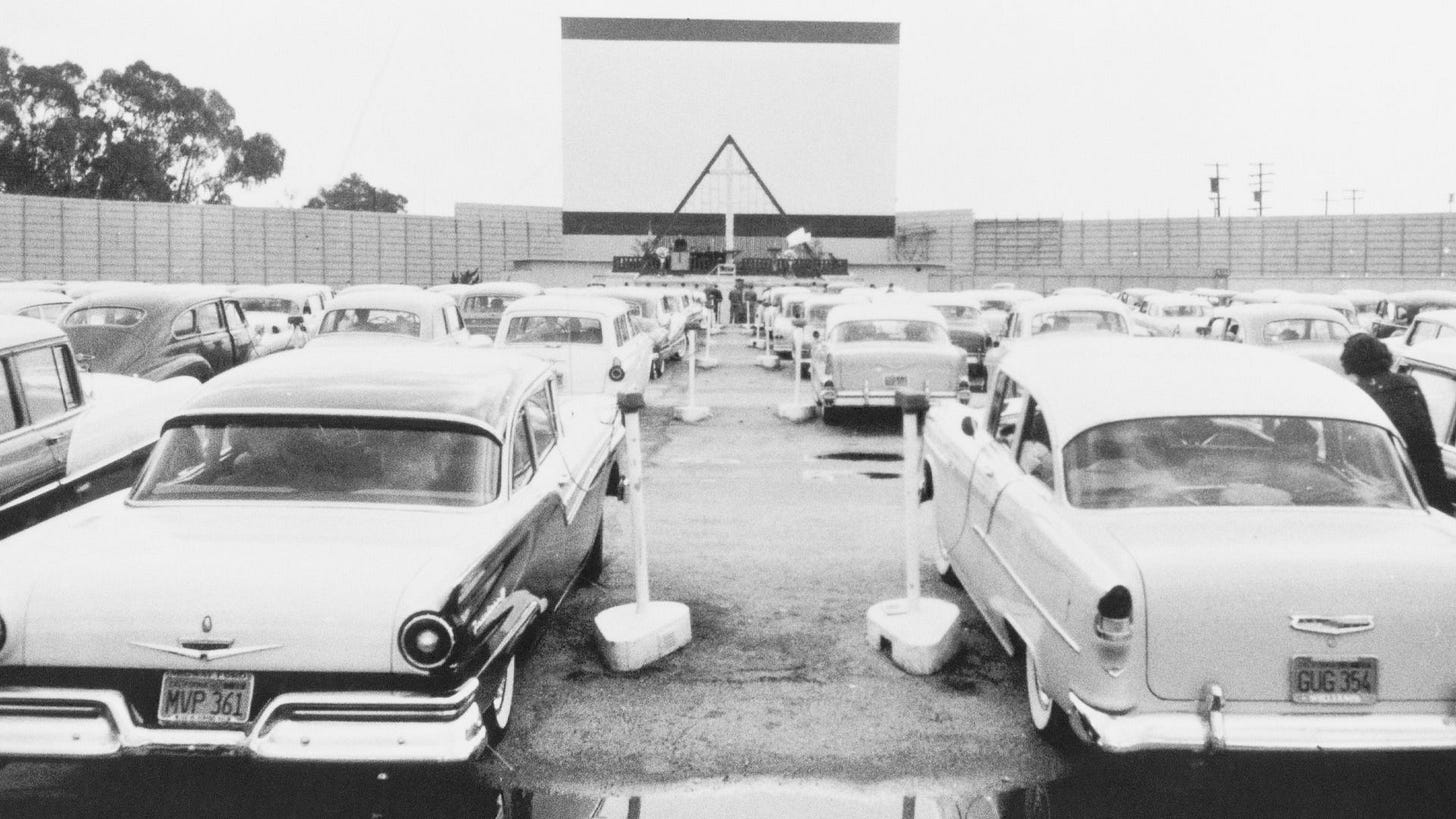The latent cultural function of technologies
We don’t abandon the old because it’s obsolete or inefficient, it only goes away when its cultural roots dry up
Every new technology begins life as a tool, but over time often becomes something stranger and more enduring: a cultural ritual. What once was valued for utility alone can outlast its practical necessity because it gets tied to human experience. So when newer, faster, or cheaper options arrive, the older forms don’t always vanish. Instead, their latent cultural function emerges, the deeper role they play in our lives beyond simply efficiency.
As cinema became more associated with a night in public and less about the flick itself, over time it became tagged to social situations. It’s typical to take a first date to a movie, or decide that’s a good place to spend an afternoon with a friend. The novelty factor of moving pictures on a screen was gone the second it was in every home. Now it’s about that second, and about the time we spend with others first. It’s ingrained in our cultural DNA to seek cinema in public as a gathering point.
You don’t need to send letters anymore, you can just send an email. But something else has happened: email made the simple idea of a handwritten note special. Only 30 years ago this wasn’t special at all, but standard. Now the real function of letters is a way to convey messages with personality, something lacking in digital text. Mass messages don’t need to be sent this way any longer, but a written letter sent to you, although quaint and unnecessary, is now seen as something intimate and important.
The interesting part of this? Even though movies and letters no longer are necessary they still exist. In other words: cultural forces create market demand even if supply is available far more efficiently elsewhere. New technologies or methods only fully replace the old when cultural forces dissipate entirely. It’s staggering how few actually capitalize on this, because it requires thinking about the world a bit differently than just how ‘to optimize’. For sure there are many startup ideas looking at the world through this lens.
Becoming tagged to a deeply human experience is what separates things that are made obsolete by better, more efficient technology from those that remain. The fading experience of enjoying a paper at the morning breakfast table or in a coffee shop, while increasingly rare, is the latent cultural function of newspapers as another example. It isn’t about the message anymore, you can get that more efficiently elsewhere. Many other technologies don’t have as deep roots, and thus are more easily replaced without people noticing they are gone. I’m not saying newspapers in print form have a future, but this is what is keeping them alive by the remaining baby boomers who enjoy them (there are still around 623,000 copies sent of the NYT Sunday print edition, but the number is steadily decreasing). Things like newspapers, print magazines or even written letters will be phased out as their roots in culture dry up.
As more of today’s standard technologies become obsolete, society will continue to see their latent cultural function emerge. This is what creates the mixed-use culture of technology – people don’t always use what is the most efficient, because the older technology is tagged to a cultural experience they are not willing to let go of that has real meaning to them.




I'm not sure it's all technology, mostly the technology that enables media delivery. We build rituals around consuming media (reading newspapers, going to drive-in movie theatres, etc) and those rituals can keep those modes of media consumption alive after the utility is gone. Vinyl records are interesting in that way as they have stayed alive after multiple generations of better technology.
Non-media tech rarely develops that kind of ritual, so it just doesn't survive a new wave.
Nobody seems to have noticed the disappearance of bars of soap. Try looking for one at a grocery store. There's a shelf and a half at the bottom in a corner, if any.